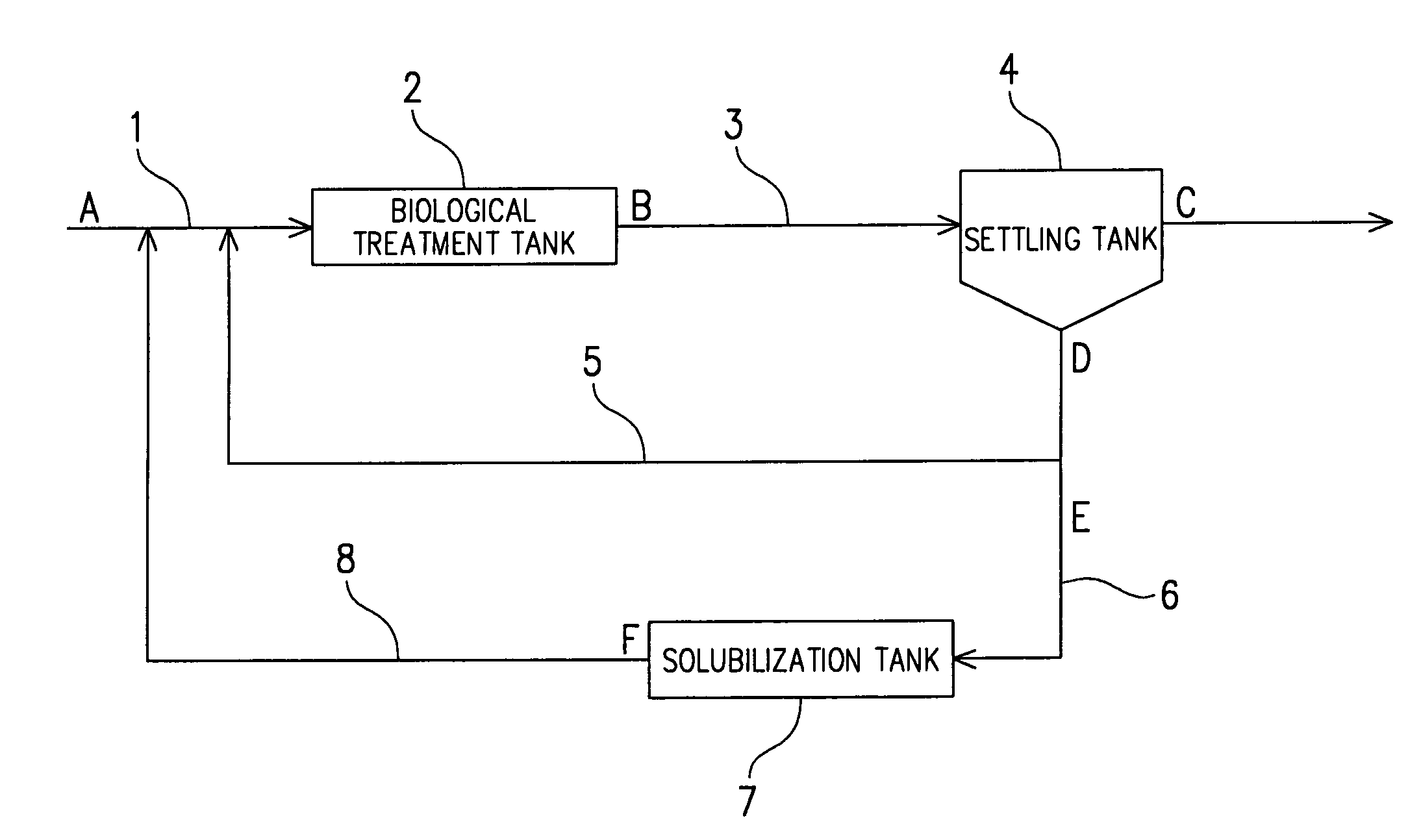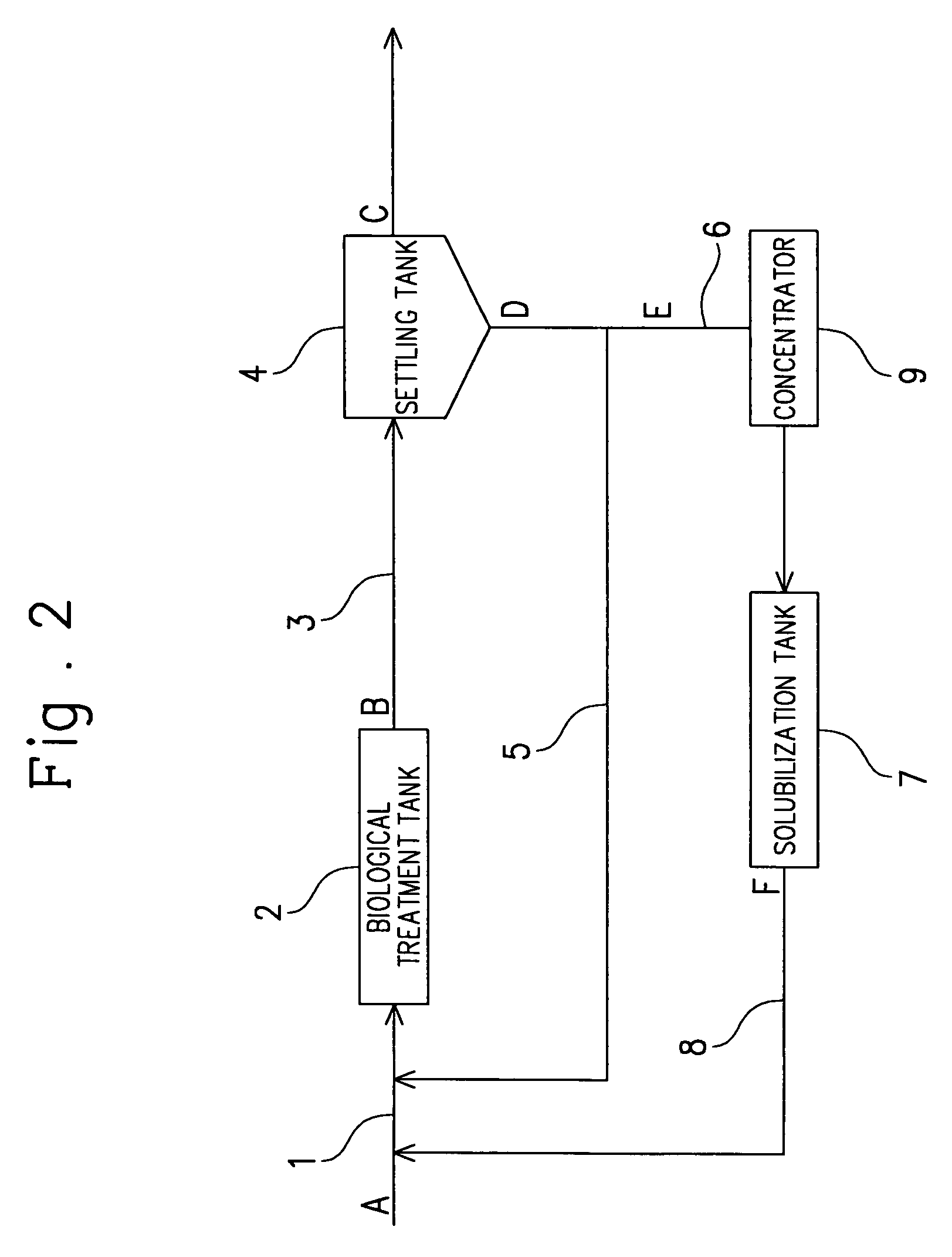Novel microorganism and process for treatment of organic solid matter using the microorganism
- Summary
- Abstract
- Description
- Claims
- Application Information
AI Technical Summary
Benefits of technology
Problems solved by technology
Method used
Image
Examples
embodiment 1
[0101]One strain among the selected four strains was tested for the mycological characteristics in the manner as described above. The mycological characteristics (morphological characteristics, cultivating characteristics and physiological characteristics) are as follows:
[0102]A. Morphological Characteristics[0103](1) Shape and size of cell: rod-shaped cell with a width of 0.7 to 0.8 μm and a length of 2.0 to 4.0 μm[0104](2) Presence or absence of motility: present[0105](3) Presence or absence of spore: present
[0106]B. Cultivating Characteristics (Nutrient Agar Plate Culture)[0107](1) Colony morphology: circular, entirely smooth edge, low convex[0108](2) Color: cream color[0109](3) Gloss: present
[0110]C. Physiological Characteristics[0111](1) Gram staining property: +[0112](2) Nitrate reduction: −[0113](3) VP test: −[0114](4) Indole production: −[0115](5) Hydrogen sulfide production: −[0116](6) Hydrolysis of starch: −[0117](7) Use of citric acid: −[0118](8) Urease: −[0119](9) Oxidas...
embodiment 2
[0161]Another strain among the selected four strains was tested for the mycological characteristics in the manner as described above. The mycological characteristics (morphological characteristics, cultivating characteristics and physiological characteristics) are as follows:
[0162]A. Morphological Characteristics[0163](1) Shape and size of cell: rod-shaped cell with a width of 0.8 μm and a length of 2.0 to 4.0 μm, cell extension observed[0164](2) Presence or absence of motility: present[0165](3) Presence or absence of spore: present
[0166]B. Cultivating Characteristics (Nutrient Agar Plate Culture)[0167](1) Colony morphology: circular, entirely smooth edge, low convex[0168](2) Color: cream color[0169](3) Gloss: present
[0170]C. Physiological Characteristics[0171](1) Gram staining property: +[0172](2) Nitrate reduction: −[0173](3) VP test: −[0174](4) Indole production: −[0175](5) Hydrogen sulfide production: −[0176](6) Hydrolysis of starch: −[0177](7) Use of citric acid: −[0178](8) Ure...
embodiment 3
[0220]Another strain among the selected four strains was tested for the mycological characteristics in the manner as described above. The mycological characteristics (morphological characteristics, cultivating characteristics and physiological characteristics) are as follows:
[0221]A. Morphological Characteristics[0222](1) Shape and size of cell: rod-shaped cell with a width of 0.7 to 0.8 μm and a length of 2.0 μm[0223](2) Presence or absence of motility: present[0224](3) Presence or absence of spore: present
[0225]B. Cultivating Characteristics (Nutrient Agar Plate Culture)[0226](1) Colony morphology: circular, entirely smooth edge, low convex[0227](2) Color: cream color[0228](3) Gloss: present
[0229]C. Physiological Characteristics[0230](1) Gram staining property: +[0231](2) Nitrate reduction: −[0232](3) VP test: −[0233](4) Indole production: −[0234](5) Hydrogen sulfide production: −[0235](6) Hydrolysis of starch: −[0236](7) Use of citric acid: −[0237](8) Urease: −[0238](9) Oxidase: ...
PUM
| Property | Measurement | Unit |
|---|---|---|
| Length | aaaaa | aaaaa |
| Length | aaaaa | aaaaa |
| Time | aaaaa | aaaaa |
Abstract
Description
Claims
Application Information
 Login to View More
Login to View More - R&D
- Intellectual Property
- Life Sciences
- Materials
- Tech Scout
- Unparalleled Data Quality
- Higher Quality Content
- 60% Fewer Hallucinations
Browse by: Latest US Patents, China's latest patents, Technical Efficacy Thesaurus, Application Domain, Technology Topic, Popular Technical Reports.
© 2025 PatSnap. All rights reserved.Legal|Privacy policy|Modern Slavery Act Transparency Statement|Sitemap|About US| Contact US: help@patsnap.com



